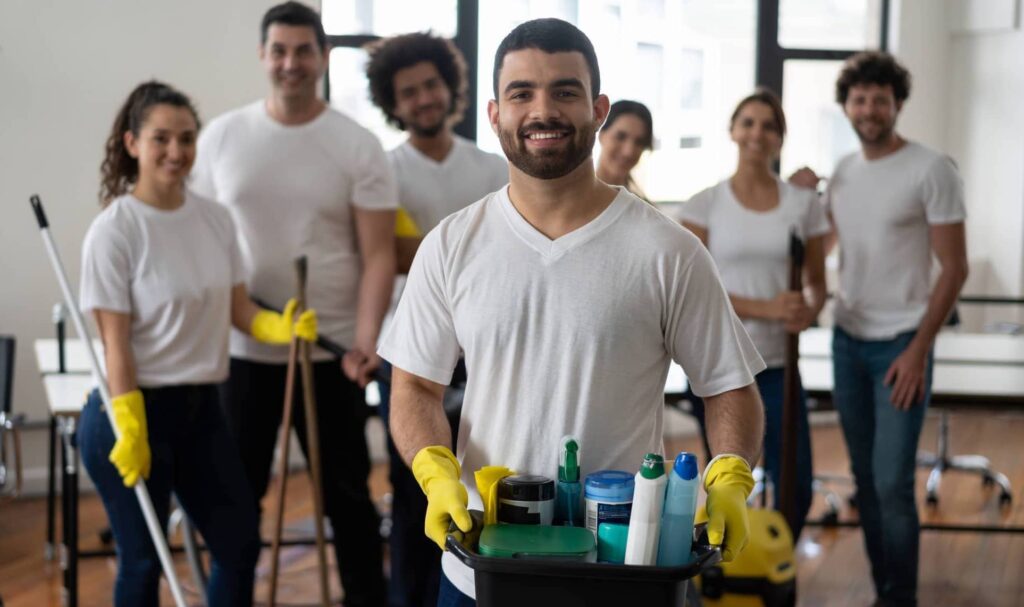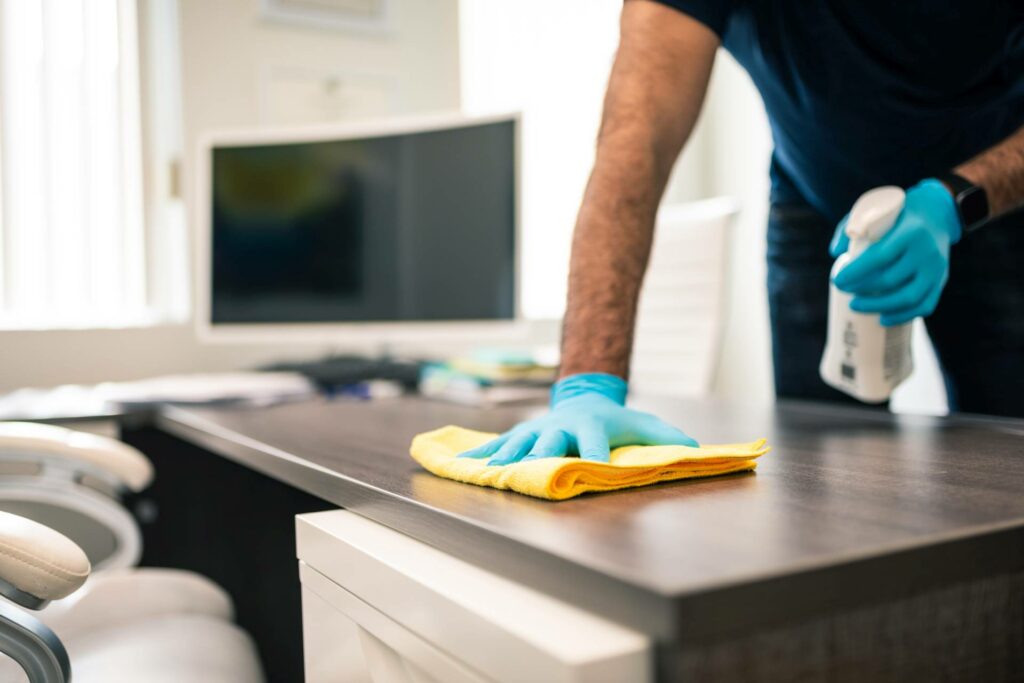The COVID-19 pandemic brought about unprecedented changes in our daily lives, especially in the way we approach cleanliness and hygiene. As we have transitioned back to our workplaces, there is a growing concern for maintaining a safe and healthy environment for employees. The concept of workspace hygiene has taken on a new level of importance as businesses navigate through the aftermath of the pandemic.
We will explore the various aspects of workspace hygiene, including best practices and guidelines, to help companies create a clean and safe working environment for their employees. From implementing strict cleaning protocols to incorporating new habits and routines, we will delve into the steps that are necessary to ensure a clean slate in the post-COVID-19 era. With the right approach and measures in place, businesses can not only protect the health and well-being of their employees but also instill a sense of confidence and security in the workplace. So, let us dive deeper into the world of workplace hygiene and discover the key strategies for a successful transition in the new normal.
Prioritize office disinfection for safety.
In order to maintain a safe and healthy work environment, it is essential for businesses to prioritize office disinfection as an ongoing practice. The presence of harmful viruses and bacteria can easily spread among employees, leading to increased sick leave and reduced productivity.
By implementing regular and thorough office disinfection, businesses can minimize the risk of illness transmission and create a safer workplace for all. While some organizations may attempt to handle this task internally, it is highly advisable to engage the services of a professional janitorial service. These professionals have the expertise and specialized equipment to effectively sanitize high-touch surfaces, shared spaces, and hard-to-reach areas.
Prioritizing office disinfection not only demonstrates a commitment to employee health and safety, but also enhances trust and confidence among clients and customers. Protecting the well-being of employees should be a top priority for businesses, and implementing regular office disinfection is a crucial step towards achieving that goal.
Quick Office Disinfection Tips
- Regularly sanitize high-touch surfaces
- Provide hand sanitizer for employees and guests
- Encourage frequent hand washing
- Hire professional janitorial service for thorough cleanings
- Implement social distancing measures in common areas
- Schedule regular office disinfection to maintain cleanliness and safety.
Regularly sanitize high-touch surfaces.
Regularly sanitizing high-touch surfaces is a crucial aspect of maintaining a hygienic workspace post-COVID-19. High-touch surfaces such as doorknobs, light switches, elevator buttons, and shared equipment can harbor harmful germs and viruses.
By implementing a regular sanitization schedule, businesses can effectively minimize the risk of contamination and create a healthier environment for employees and visitors. It is recommended to enlist the services of a professional janitorial service to ensure thorough and effective sanitization. These professionals are equipped with the knowledge, expertise, and appropriate disinfection products to target high-touch areas and eliminate any potential sources of infection. Incorporating regular sanitization practices not only helps protect the well-being of employees but also promotes a sense of confidence and trust in the workplace environment.
Consider implementing new cleaning protocols.
To further enhance workplace hygiene, it is important for businesses to consider implementing new cleaning protocols. Office disinfection should go beyond just sanitizing high-touch surfaces. This may include implementing measures such as regular deep cleaning of the entire workspace, including carpets, upholstery, and ventilation systems.
Businesses may explore the use of advanced cleaning technologies, such as UV-C light or electrostatic sprayers, which can effectively eliminate bacteria and viruses from the environment. By incorporating these new cleaning protocols, businesses can ensure a higher level of cleanliness and promote a healthier and safer workspace for everyone. Partnering with a professional janitorial service that is well-versed in these updated cleaning practices can provide businesses with the expertise and resources needed to implement these protocols effectively.
New Cleaning Protocol Suggestions
- Regular office disinfection schedules
- Increased frequency of cleaning high-touch surfaces
- Use of EPA-approved disinfectants
- Providing hand sanitizer for employees
- Hiring professional janitorial services
- Implementing social distancing measures for cleaning staff
Stay informed on CDC recommendations.
Staying informed on the latest recommendations from the CDC is crucial for businesses seeking to navigate workspace hygiene in the post-COVID-19 era. The CDC regularly updates its guidelines to reflect the evolving understanding of the virus and its transmission. By staying up to date on these recommendations, businesses can ensure that their cleaning protocols align with the best practices for preventing the spread of COVID-19 and other diseases. It is recommended to regularly check the CDC’s website or subscribe to their newsletters to receive the most recent updates. By incorporating the latest CDC recommendations into their office disinfection and cleaning procedures, businesses can prioritize the health and safety of their employees and clients. Partnering with a professional janitorial service that is well-informed on the CDC guidelines can provide businesses with expert guidance and support in implementing these recommendations effectively.
As we navigate the post-COVID workplace, it is important to prioritize hygiene in our workspaces. By implementing regular cleaning and disinfecting protocols, as well as promoting personal hygiene practices, we can create a clean and safe environment for all employees. This not only helps prevent the spread of illness, but also promotes overall health and well-being. Let us continue to prioritize hygiene in our workspaces and make a positive impact on the health and productivity of our workplace.
Frequently Asked Questions
Some practical strategies for maintaining a clean and hygienic workspace in the post-COVID-19 era include regular disinfection of high-touch surfaces, promoting hand hygiene by providing hand sanitizers and handwashing stations, implementing social distancing measures, encouraging the use of face masks, improving ventilation, reducing shared items, and promoting remote work when possible. Additionally, creating a culture of cleanliness and regularly educating employees on proper hygiene practices can help ensure a safe and healthy work environment.
Employers can effectively communicate and enforce hygiene protocols in the workplace by implementing clear policies, providing training to all employees, regularly reminding staff of the protocols through various communication channels, ensuring access to necessary hygiene supplies, leading by example, and consistently monitoring and enforcing compliance through regular inspections and feedback mechanisms. By creating a culture of accountability and prioritizing the health and safety of their employees, employers can successfully mitigate potential risks and promote a clean and safe work environment.
When implementing touchless technology and other innovations to promote cleanliness in the office, key considerations include evaluating the cost-effectiveness of the solutions, ensuring compatibility with existing systems, training employees on proper usage and maintenance, considering the scalability of the technology for future needs, and obtaining feedback from staff to address any concerns or challenges. Additionally, it’s important to prioritize solutions that are user-friendly, sustainable, and compliant with health and safety regulations to effectively enhance cleanliness and hygiene in the workplace.
Employees can be encouraged to take responsibility for their hygiene habits in the workplace through clear communication of expectations, providing necessary resources like hand sanitizers and cleaning supplies, setting a good example by practicing good hygiene habits themselves, offering incentives for maintaining cleanliness, and implementing regular reminders and training sessions on proper hygiene practices. Creating a positive and supportive work environment where hygiene is prioritized can also help foster a culture of personal responsibility for cleanliness among employees.
Some tips for employees to stay healthy and hygienic in a shared workspace include regularly washing hands, disinfecting shared surfaces, practicing good respiratory hygiene, staying hydrated, maintaining proper posture, taking short breaks to stretch, and eating nutritious meals. It’s important to also get fresh air, communicate openly with colleagues about cleanliness concerns, and consider using personal items like keyboards or pens to minimize contact with shared objects. By following these practices, employees can create a safer and healthier environment for themselves and their coworkers.





